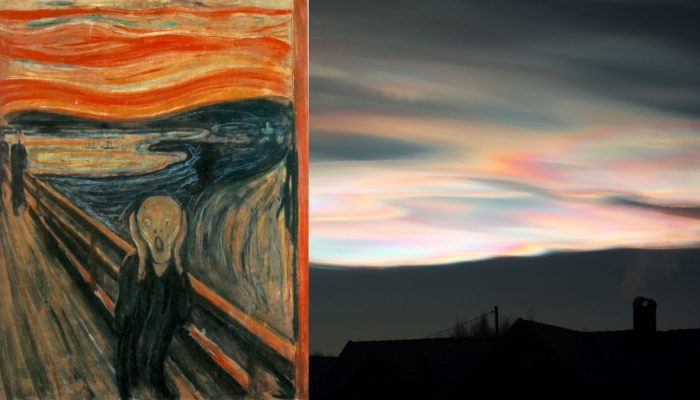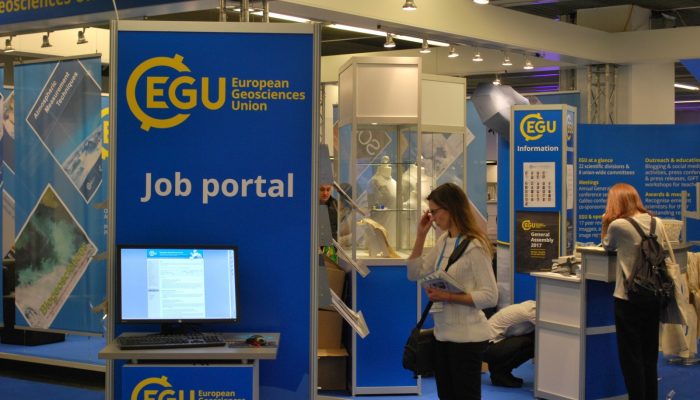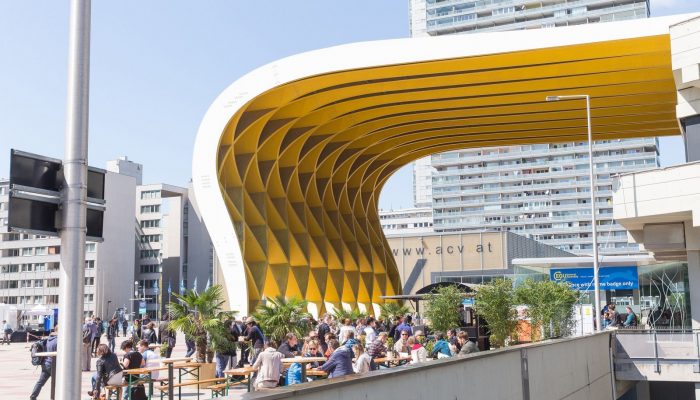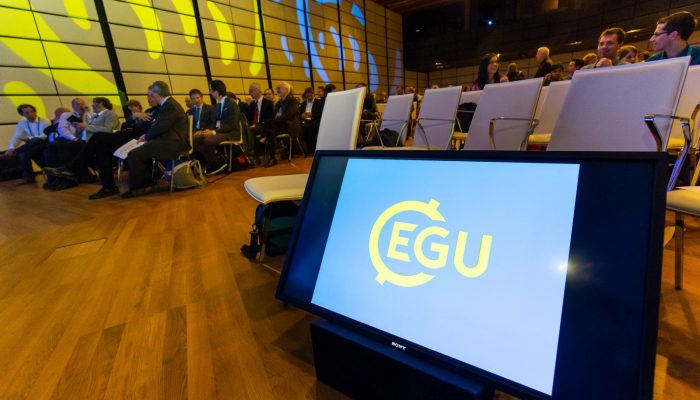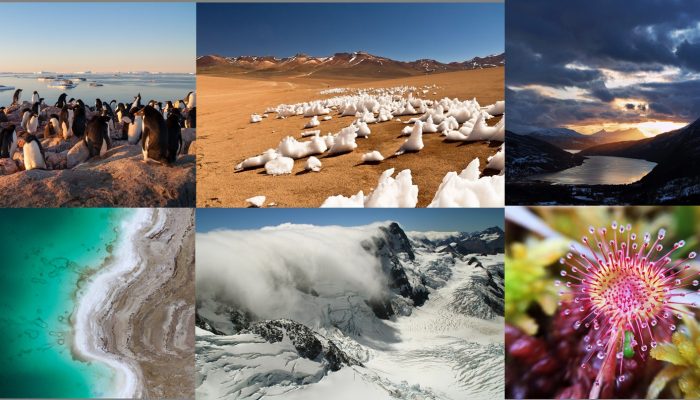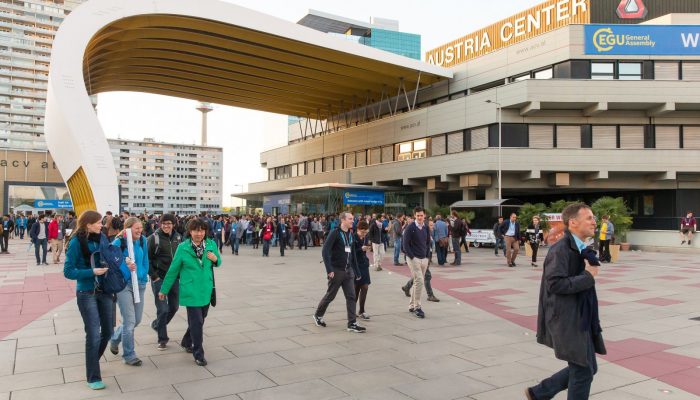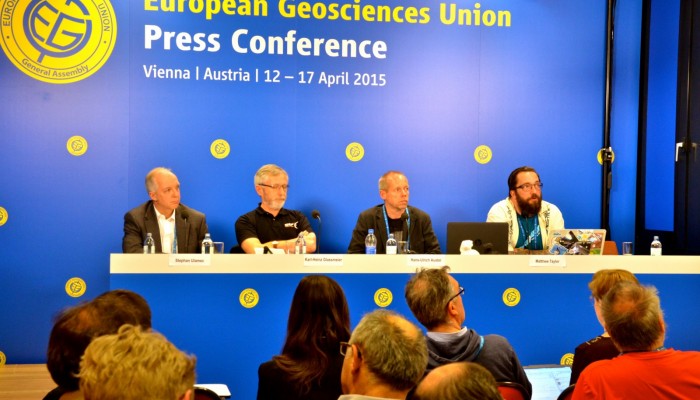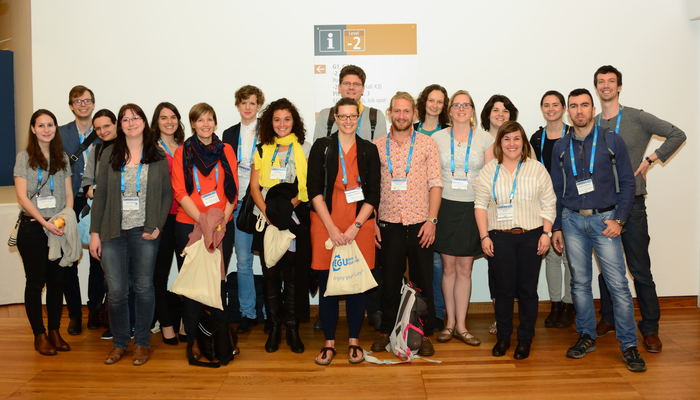Edvard Munch’s series of paintings and sketches ‘The Scream’ are some of the most famous works by a Norwegian artist, instantly recognisable and reproduced the world over. But what was the inspiration behind this striking piece of art? The lurid colours and tremulous lines have long been thought to represent Munch’s unstable state of mind; a moment of terror caught in shocking technicolour. At the ...[Read More]
GeoLog
Head on over to the EGU Booth!
You can find the EGU Booth in Hall X2 on the Brown Level. This is the place to come if you’d like to meet members of EGU Council and Committees (Meet EGU) and find out more about EGU activities. Here you can discover the EGU’s 17 open access journals, browse the EGU blogs (GeoLog, the EGU Blog Network and the EGU Division Blogs), catch up on the conference Twitter feed, and more! We will also be g ...[Read More]
GeoLog
At the Assembly 2017: Wednesday Highlights
We’re halfway through the General Assembly already! Once again there is lots on offer at EGU 2017 and this is just a taster – be sure to complement this information with EGU Today, the daily newsletter of the General Assembly, available both in paper and for download here. The day kicks off with an interdisciplinary Union-wide session: Vegetation-climate interactions across time scales (US1, 08:30 ...[Read More]
GeoLog
Explore the Exhibition at EGU 2017!
Don’t forget to visit the Exhibition at the European Geosciences Union General Assembly! Exhibition booths for companies, publishers, scientific societies and many more are scattered throughout the Brown (basement), Yellow (ground floor), and Green (first floor) Levels of the Austria Center Vienna. See the General Assembly website for a full list of who’s attending and where to find them. Make sur ...[Read More]
GeoLog
At the Assembly 2017: Tuesday Highlights
Welcome back to the second day of the 2017 General Assembly! Today is packed full of excellent sessions, and this list of highlights is by no means comprehensive! Make sure you complement this information with EGU Today, the General Assembly newsletter, to get the most out of the conference – grab a copy on your way in or download it here. Today, the General Assembly programme features two Interdi ...[Read More]
GeoLog
Photo Contest finalists 2017 – who will you vote for?
The selection committee received over 300 photos for this year’s EGU Photo Contest, covering fields across the geosciences. The fantastic finalist photos are below and they are being exhibited in Hall X2 (basement, Brown Level) of the Austria Center Vienna – see for yourself! Do you have a favourite? Vote for it! There is a voting terminal (also in Hall X2), just next to the exhibit. The results w ...[Read More]
GeoLog
At the Assembly 2017: Monday highlights
Welcome to the 2017 General Assembly! This is the first full day of sessions and there’s a feast of them to choose from. Every day we’ll be sharing some super sessions and events at EGU 2017 here on GeoLog and you can complement this information with EGU Today, the daily newsletter of the General Assembly. Of particular importance today is the Union’s Plenary Meeting (UMI0) at 12:15 in Room E1 – i ...[Read More]
GeoLog
EGU 2017: Follow the conference action live!
Earlier this month we shared a post on how you can keep up to date with all the science being presented at the General Assembly via our social media channels. This week we share with you how you can tune into the conference action, live! Many of the EGU General Assembly highlights will be streamed live, so if you can’t make it to Vienna this year, you can still watch the Union Symposia on Making F ...[Read More]
Cryospheric Sciences
Image of the Week — We’re heading for Vienna
♫ Tatata taaa tatatatata Tatata taaa tatatatatatatata We’re heading for Vienna (Vienna) And still we stand tall ‘Cause maybe they’ve seen us (seen us) And welcome us all, yeah With so many miles left to go And things to be found (to be found) I’m sure that we’ll all miss that so it’s the … ♫ …congratulations, you’ve recognise the song….. ...[Read More]
GeoLog
What’s on for early career scientists at the Assembly in 2017
This year, there’s a great line-up of early career scientist (ECS) sessions at the General Assembly. Not only that, but there are opportunities to meet those that represent you in the Union, get to know other ECS in your field, and make the most of both the scientific and social sides of the conference… Networking First up for ECS is the icebreaker event on the Sunday before the meeting, while thi ...[Read More]

